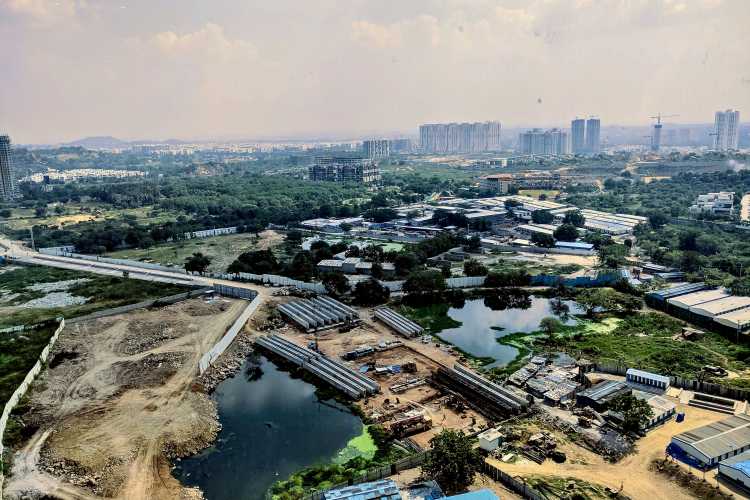
India’s special economic zone programme, initiated with much fanfare more than 20 years ago, was expected to promote exports, attract foreign investment, create jobs, and develop world class infrastructure. Despite the lofty goals, the SEZ programme faltered, revealing critical shortcomings that hinder its potential impact on the broader economy. The recent decision to extend the Remission of Duties and Taxes on Exported Products (RODTEP) scheme to include SEZs and Export Oriented Units (EOUs) exposes a systemic flaw in India’s approach to trade and manufacturing policy. This move, while beneficial to the SEZs, underscores a broader issue – the need for a level playing field across all industrial units in India.
The challenges faced by the SEZ programme are manifold. It failed to achieve the desired level of export diversification. Instead of creating a broad-based export-driven industrial ecosystem, SEZs have largely concentrated on the IT/ITeS sector. This skewness has left the manufacturing sector, which was intended to be the prime beneficiary of the SEZ policy, lagging. Various factors contribute to this lag, including high operational costs, a scarcity of skilled manpower, global economic crises, and domestic market constraints. These challenges underscore the need for a more nuanced approach to developing SEZs, one that takes into account the unique needs and potential of different sectors.
READ | India’s generic drugs industry needs a trade tune-up
SEZ programme controversies
Moreover, the SEZs have been embroiled in controversies related to land acquisition, leading to disputes, environmental degradation, and social displacement. The programme’s approach to acquiring land has often overlooked the rights and livelihoods of local communities, leading to significant backlash and protests. Additionally, the environmental impact of these zones has been a concern, with some SEZs not adhering to environmental norms and standards, thereby contributing to pollution and ecological imbalance.
The fiscal incentives and tax exemptions offered to SEZs have also been a point of critique. While these incentives were designed to attract investment, they have resulted in substantial revenue losses for the government without proportionate gains in export competitiveness or economic diversification. Furthermore, these incentives have created distortions in the tax system, favouring SEZs over other industrial units and contributing to an uneven playing field.
The extension of the RODTEP scheme to SEZs, while potentially beneficial for these zones, highlights a broader issue in India’s trade and manufacturing policies, says a policy brief by GTRI, a New-Delhi-based think tank. By potentially overcompensating import-intensive exports from SEZs, the government risks sidelining other industrial sectors that are equally important to the economy, it says. This approach not only exacerbates fiscal imbalances but also misses the opportunity to promote comprehensive industrial growth across the board.
To achieve a more balanced and equitable industrial atmosphere, it is imperative that the benefits enjoyed by SEZ units are extended to all industrial units across India. This would ensure a level playing field, stimulate widespread economic growth, and foster a more inclusive industrial development model. Policies need to be reformed to address the shortcomings of the SEZ programme, focusing on diversifying exports, enforcing environmental compliance, ensuring equitable land acquisition processes, and rationalising tax incentives.
Need for comprehensive reforms
For India to leverage its full industrial potential, comprehensive reforms are necessary. These include:
Sectoral Diversification: Promoting a wider array of sectors within SEZs, especially those that are high value-added and technology-intensive, to ensure broad-based industrial growth.
Land Acquisition Reforms: Implementing transparent and participatory processes for land acquisition that respect the rights and livelihoods of local communities.
Environmental Standards: Strengthening environmental regulations within SEZs to ensure sustainable and ecologically responsible industrial development.
Tax Incentive Rationalisation: Revising the structure of tax incentives and exemptions to minimize fiscal losses and ensure a fair distribution of benefits across all industrial units.
Streamlining Regulatory Processes: Simplifying approval and clearance procedures to remove bureaucratic hurdles and foster a more business-friendly environment.
Infrastructure and Connectivity: Enhancing the infrastructure within and around SEZs to improve accessibility and facilitate smoother operations for industrial units.
Policy Stability: Providing a stable policy environment to maintain investor confidence and ensure long-term planning and investment.
By addressing these areas, India can transform its SEZ program into a catalyst for inclusive and sustainable economic growth. Such reforms would not only enhance the competitiveness of Indian exports but also contribute to the development of a robust, diversified, and equitable industrial ecosystem.
India’s experience with SEZs offers valuable lessons on the complexities of export-driven economic models. While the SEZ programme has faced its share of challenges, it also presents opportunities for reform and revitalisation. By adopting a more inclusive, equitable, and sustainable framework that extends benefits all industrial units across the country, India can ensure that its SEZs not only bolster export performance but also contribute to a balanced economic development.
This entails embracing comprehensive reforms, including sectoral diversification, equitable land acquisition, environmental sustainability, and a stable policy environment. Such a holistic approach will not only enhance India’s competitiveness on the global stage, but also ensure that the economic dividends of SEZs are widely shared across the nation, mirroring the transformative impact witnessed in China’s economic landscape.
